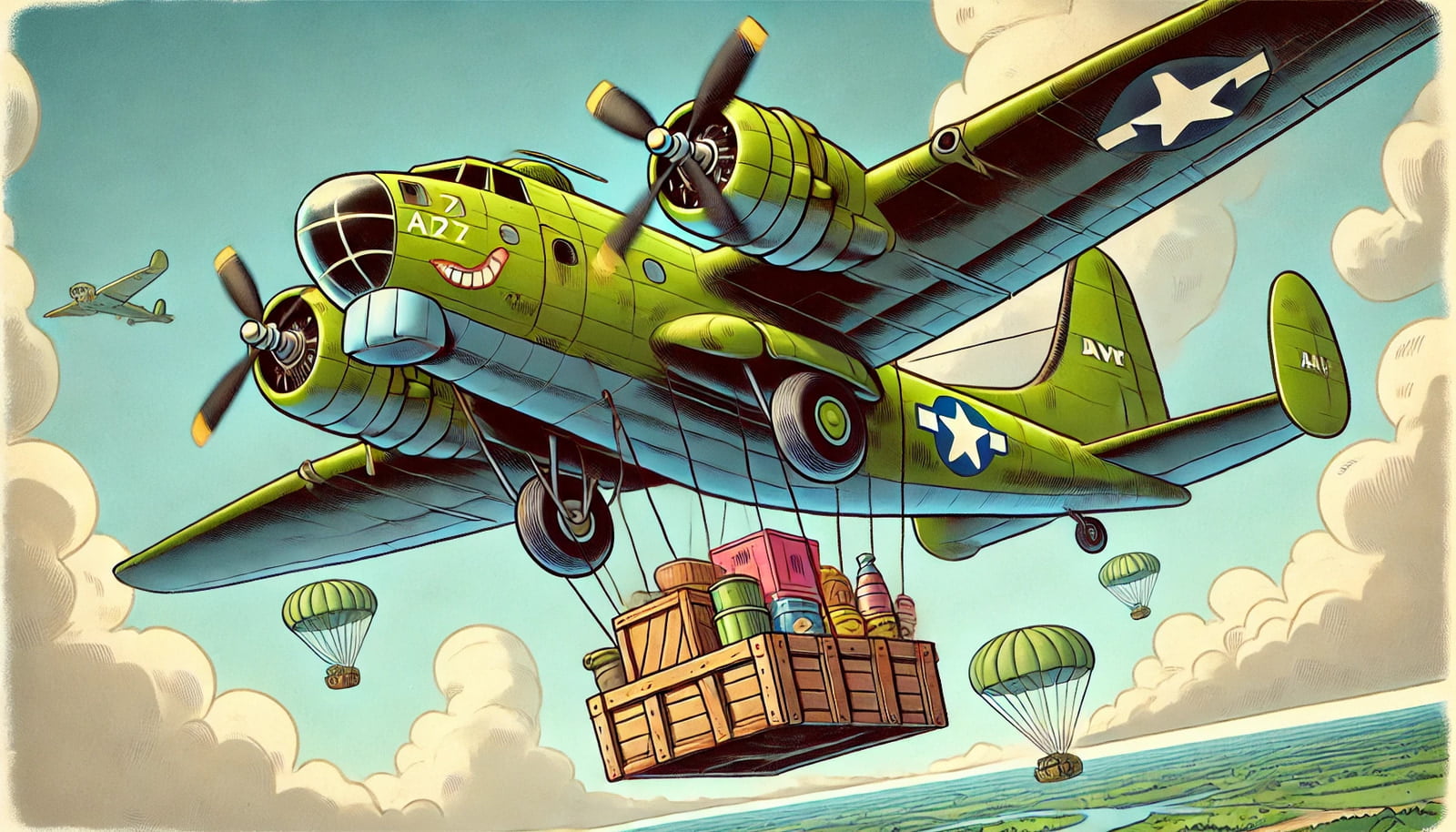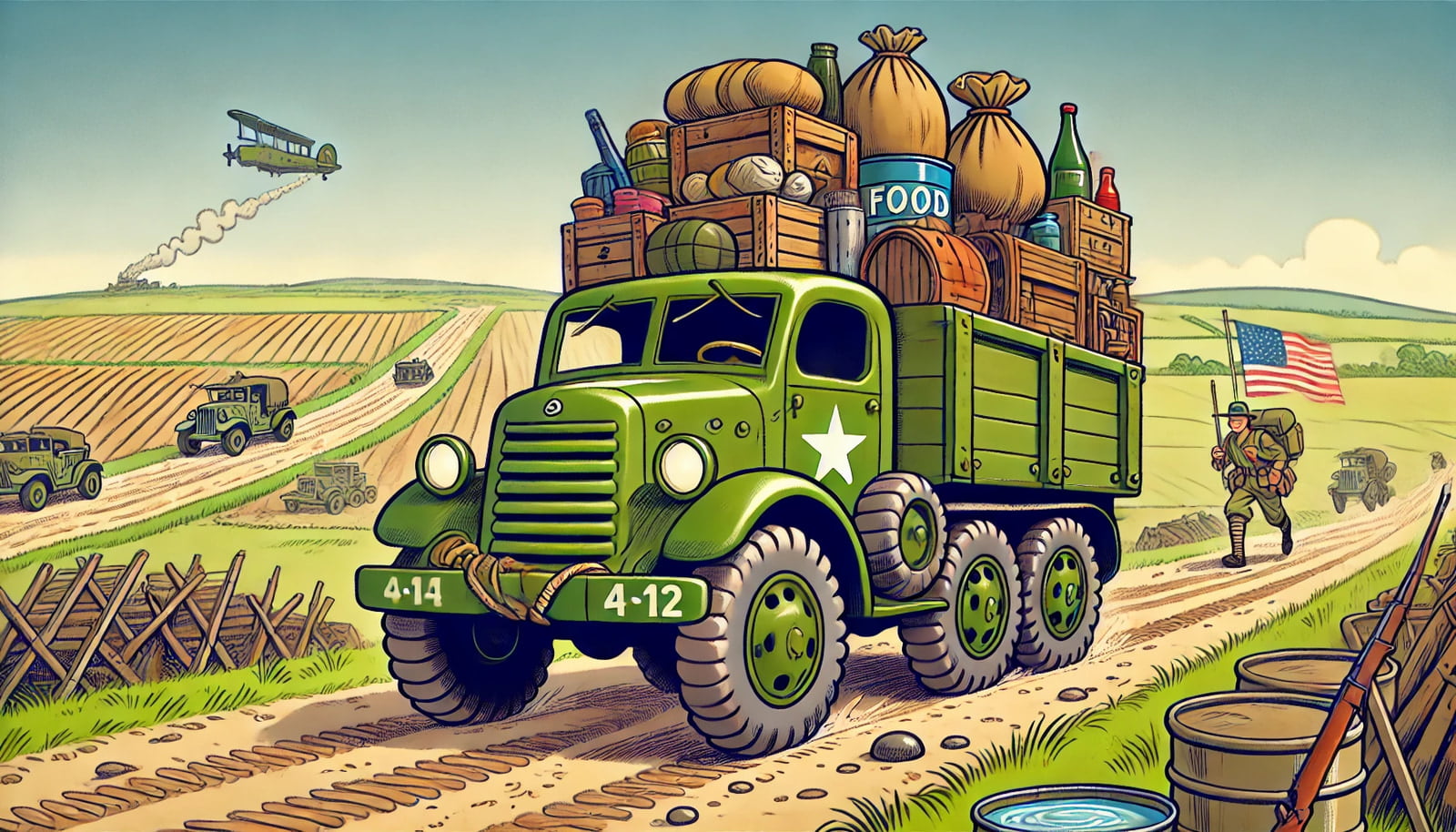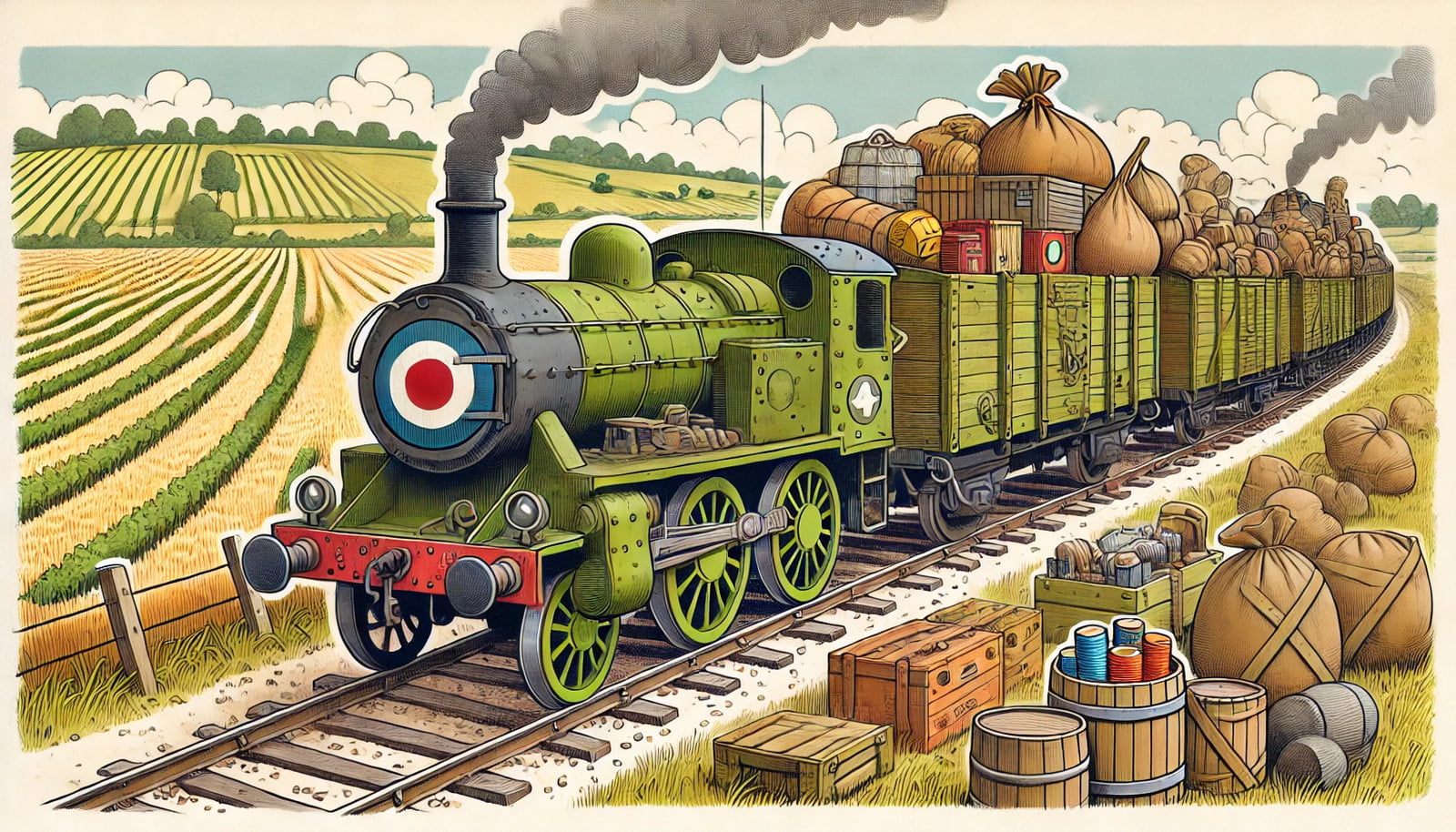
World War II was a global conflict that required massive logistical operations to supply troops, maintain production, and sustain populations across continents. Moving resources efficiently and securely was a strategic necessity for all belligerent nations, influencing both the duration and outcome of the war. This blog article explores how resources were transported and supplied during World War II, focusing on key methods, strategies, and challenges faced by the major participants.
1. The Importance of Logistics in WWII
Logistics—the art and science of moving, supplying, and maintaining military forces—played a critical role in World War II. Unlike any previous conflict, WWII was a war of movement, marked by fast-paced offensives and global reach. To support their war efforts, countries needed to coordinate complex supply chains that stretched across thousands of miles, often through hostile environments and under constant threat of enemy attack.
The logistics of World War II encompassed several components:
- Transport of troops and equipment to various fronts.
- Supply of food, fuel, ammunition, and medical supplies to soldiers and civilian populations.
- Industrial production and resource allocation, including raw materials like steel, oil, and rubber.
- Repair and replacement of vehicles, ships, aircraft, and other machinery.

2. Key Methods of Resource Movement and Supply
A. Sea Transport
Sea transport was the backbone of resource movement during World War II, especially for the Allies. The vast distances between theaters of war in Europe, the Pacific, and North Africa required that vast quantities of men, vehicles, and supplies be moved across oceans.
- Convoys: To mitigate the threat of German U-boats in the Atlantic, the Allies developed the convoy system, where groups of merchant ships traveled together under the protection of naval escorts. This system significantly reduced losses to submarine attacks.
- Liberty Ships: The United States ramped up ship production with "Liberty Ships," which were designed for rapid assembly and mass production. These cargo ships became the workhorses of transatlantic supply, carrying everything from tanks to food supplies.
- Naval Superiority and Sea Lanes: Control of strategic sea lanes was crucial. The Battle of the Atlantic, the longest continuous military campaign of WWII, was fundamentally a struggle for control over these vital supply routes. Similarly, in the Pacific, the US Navy’s island-hopping strategy aimed to capture key islands to establish forward bases, ensuring shorter and safer supply routes.
B. Rail Transport
Railroads were the lifeline of land-based logistics. They were crucial for moving large quantities of supplies from production centers to ports or front lines.
- Europe and the Soviet Union: In Europe, rail networks were heavily used by both the Axis and Allied powers. The Soviet Union, with its vast landmass, relied extensively on its rail system to transport troops, tanks, and supplies across its territory, especially after much of its industrial base was relocated east of the Ural Mountains to avoid German advances.
- The Role of Logistics in Blitzkrieg: The German strategy of Blitzkrieg, or "lightning war," relied heavily on fast-moving troops supported by tanks and aircraft. However, the success of this strategy also depended on efficient rail networks to keep these forces supplied with fuel, ammunition, and other essentials.
C. Air Transport
Air transport was less significant in terms of total volume moved but was critical for rapid and strategic deliveries. Air transport came into its own during WWII for several reasons:
- Air Supply Drops: Airborne forces, such as paratroopers, often relied on air supply drops for resupply during airborne operations. This was evident during operations like D-Day and the Battle of Arnhem.
- Strategic Airlift Operations: In the Pacific theater, the US used air transport extensively for "island hopping" operations, moving troops and supplies to newly captured islands. The "Hump" airlift over the Himalayas was another remarkable operation where the US Air Force supplied Chinese forces and the Flying Tigers with materials by flying over the treacherous Himalayan mountains from India to China.
D. Road Transport and Motorized Convoys
Motor vehicles played a crucial role in the short-to-medium distance movement of supplies from railheads or ports to front-line units.
- Red Ball Express: After the Normandy invasion in 1944, the Allies established the "Red Ball Express," a massive trucking operation that moved supplies from the Normandy beaches to advancing Allied forces. This system was instrumental in keeping the rapidly advancing forces supplied with fuel, ammunition, and food.
- Supply Challenges in North Africa: In the North African campaign, both the Allies and the Axis faced significant logistical challenges due to vast distances, lack of infrastructure, and harsh desert conditions. Motor convoys and their protection from air attacks were critical in this theater.

3. Challenges in Resource Movement and Supply.
The logistical operations of WWII faced several challenges:
- Enemy Interference: Both sides employed strategies to disrupt each other's supply lines. This included U-boat attacks on Allied convoys, the Allied strategic bombing campaign against German industry and rail networks, and the Japanese efforts to cut off Australia and China from Allied supply routes.
- Geographical Obstacles: Harsh terrain, such as the deserts of North Africa, the mountains of Italy, and the jungles of the Pacific, posed significant challenges to logistics. Weather conditions, like the Russian winter, also played a pivotal role in hindering supply efforts.
- Resource Scarcity: Several critical resources were scarce during the war. For example, the Allies faced shortages of rubber, oil, and certain metals. To mitigate these shortages, synthetic substitutes were developed, and strategic stockpiling was employed.
4. Innovations and Adaptations in Wartime Logistics.
World War II spurred numerous innovations in logistics and supply chain management:
- Mechanization and Motorization: The war accelerated the mechanization of armies, with trucks, jeeps, and other motor vehicles becoming essential for logistics. This mechanization required new organizational strategies to manage fuel and spare parts.
- Pipeline Technology: To supply the vast quantities of fuel needed by advancing armies, the Allies developed innovative solutions such as the "PLUTO" (Pipeline Under The Ocean), which supplied fuel across the English Channel to the Normandy beachheads.
- Standardization of Containers: To streamline the loading and unloading of ships, the Allies developed standardized containers, a precursor to the modern shipping container. This innovation greatly increased efficiency at ports and during transport.
5. The Role of Women and Civilians in Logistics.
During WWII, women and civilians played crucial roles in logistics:
- Workforce Contribution: In the absence of men who were fighting on the front lines, women took up jobs in factories, railroads, and other essential services. Their contribution ensured the continuous production of war materials and the operation of transport networks.
- Home Front Efforts: Civilians were also engaged in activities such as rationing, recycling drives, and volunteer work to support logistics efforts. For example, metal drives collected scrap metal that could be repurposed for military use.
6. Conclusion: The Legacy of WWII Logistics.
The logistics of World War II reshaped global supply chains and introduced innovations that have continued to influence military and civilian logistics. The war underscored the importance of efficient resource movement and supply in determining the outcome of conflicts. Lessons learned from WWII have been applied to subsequent conflicts and continue to inform modern supply chain management and military logistics.
By examining the vast and complex logistics operations of WWII, we can better appreciate the scale of the war and the importance of logistics in supporting military strategy and sustaining economies and societies during times of global conflict.


